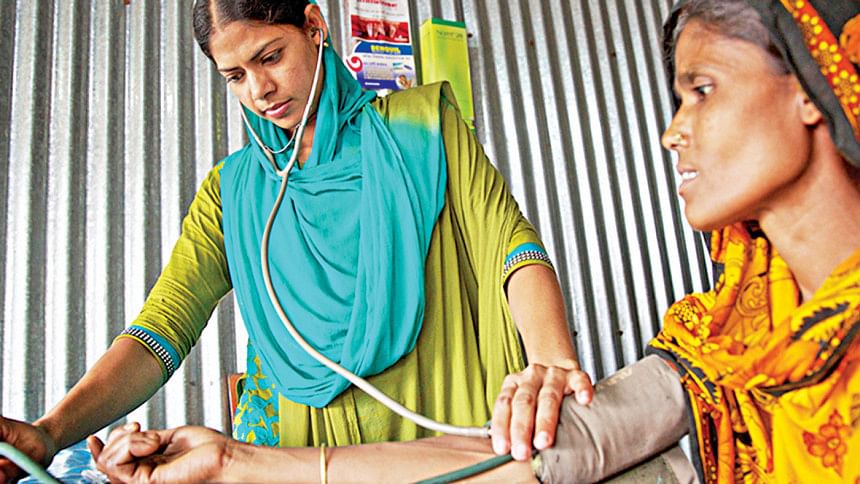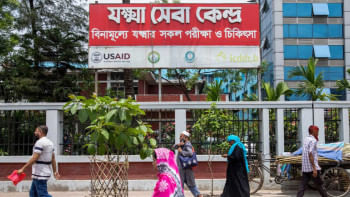NCDs: a greater threat than COVID-19 to women

The matters of grave concern in health are not the epidemic, flues or parasites that reign over the news and take most of the government's effort, rather they are the everyday diseases that people can address yet fail to take action.
Non-Communicable Diseases (NCDs) have emerged as the leading cause of death and disabilities, contributing 67% to the total death in Bangladesh. The chronic nature of NCDs extends both patients' experience of suffering and duration of treatment, creating further economical strain on them. A recent survey states that prevention and treatment services for NCDs have been severely disrupted since the COVID-19 pandemic started, and low-middle income countries like Bangladesh are the most affected.
Women face a particularly high risk of NCDs and interrelated health challenges that are underpinned by inequality and marginalisation. Approximately two out of every three women die from an NCD, amounting to 16.8 million deaths globally. Apart from that women's health status also relates to the health and vulnerability of her children, being born to a malnourished mother increases an infant's risk of under-nutrition, low birth weight, and increased vulnerability to NCDs in adulthood.
Even when healthcare services are affordable, the socio-cultural status of women translates into reduced access to health resources and health literacy. Women from lower socio-economic backgrounds often give up accessing care or funds of medicines to provide food or education materials for their children. Further, many young women and girls are unable to make healthcare decisions even for their children without the explicit approval of their husband or another family member.
Although both men and women are being affected by NCDs, there lies a different level of vulnerability to risk factors: women are more likely to become obese than men. Particular NCDs like CVDs seem to be diagnosed lately among women, revealing symptoms differently.
The modern way of life is a major cause of many non-communicable diseases, leading to serious consequences and tremendous costs for health care systems. The status of NCDs as the biggest killer is further fueled by air pollution and unhealthy diet which is accompanied by highly processed foods rich in fat, sugar and salt. As these products have become more widely available, the prevalence of NCDs has exploded.
Above all, the implementation of sustainable solutions for NCDs calls for political action. Besides, acknowledging and researching the existing gender barriers in the community and healthcare system can be the first step to alleviating some of the harm caused.
The integrated initiative of both the public and private sector to start outreach programmes that help to address the gender bias will help make people more aware of such barriers and how it manifests.
The writer works at the Eminence Associates for Social Development. E-mail: [email protected]

 For all latest news, follow The Daily Star's Google News channel.
For all latest news, follow The Daily Star's Google News channel. 



Comments